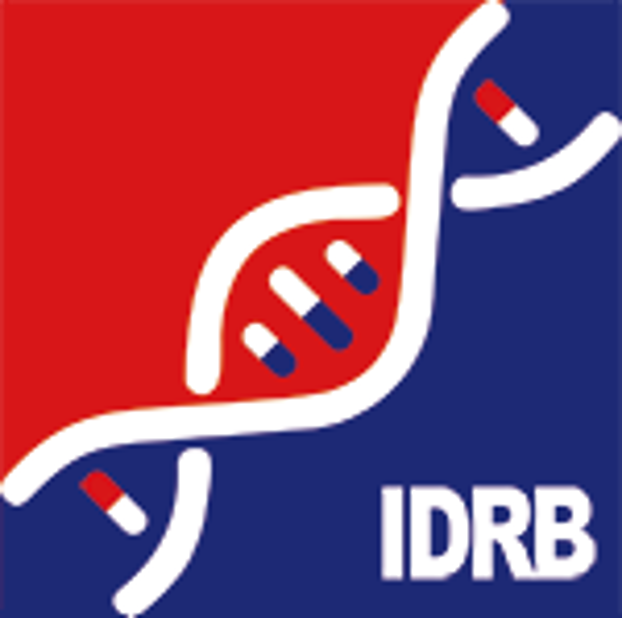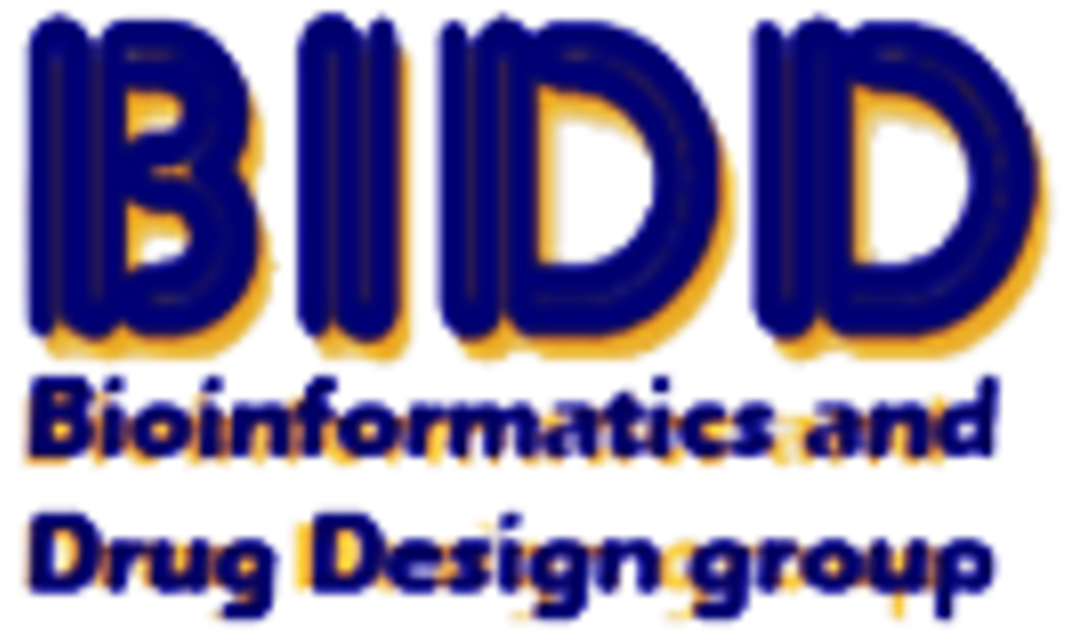Target Information
| Target General Infomation | |||||
|---|---|---|---|---|---|
| Target ID |
T33584
|
||||
| Former ID |
TTDC00250
|
||||
| Target Name |
Glutamate receptor 1
|
||||
| Gene Name |
GRIA1
|
||||
| Synonyms |
AMPA-selective glutamate receptor 1; GluR-1; GluR-A; GluR-K1; Glutamate receptor ionotropic, AMPA 1; GRIA1
|
||||
| Target Type |
Clinical Trial
|
||||
| Disease | Alzheimer disease [ICD9: 331; ICD10: G30] | ||||
| Convulsions [ICD9: 780.3; ICD10: R56.0] | |||||
| Major depressive disorder; Schizophrenia [ICD9:296.2, 296.3, 710.0, 295; ICD10: F32, F33, M32, F20] | |||||
| Neurological disease [ICD9: 338, 338.2, 410, 782.3,780; ICD10: I21, I22, R52, R52.1-R52.2, R60.9, G89] | |||||
| Function |
Ionotropic glutamate receptor. L-glutamateacts as an excitatory neurotransmitter at many synapses in the central nervous system. Binding of the excitatory neurotransmitter L- glutamate induces a conformation change, leading to the opening ofthe cation channel, and thereby converts the chemical signal to an electrical impulse. The receptor then desensitizes rapidly and enters a transient inactive state, characterized by the presence of bound agonist. In the presence of CACNG4 or CACNG7 or CACNG8, shows resensitization which is characterized by a delayed accumulation of current flux upon continued application of glutamate.
|
||||
| BioChemical Class |
Glutamate-gated ion channel
|
||||
| Target Validation |
T33584
|
||||
| UniProt ID | |||||
| Sequence |
MQHIFAFFCTGFLGAVVGANFPNNIQIGGLFPNQQSQEHAAFRFALSQLTEPPKLLPQID
IVNISDSFEMTYRFCSQFSKGVYAIFGFYERRTVNMLTSFCGALHVCFITPSFPVDTSNQ FVLQLRPELQDALISIIDHYKWQKFVYIYDADRGLSVLQKVLDTAAEKNWQVTAVNILTT TEEGYRMLFQDLEKKKERLVVVDCESERLNAILGQIIKLEKNGIGYHYILANLGFMDIDL NKFKESGANVTGFQLVNYTDTIPAKIMQQWKNSDARDHTRVDWKRPKYTSALTYDGVKVM AEAFQSLRRQRIDISRRGNAGDCLANPAVPWGQGIDIQRALQQVRFEGLTGNVQFNEKGR RTNYTLHVIEMKHDGIRKIGYWNEDDKFVPAATDAQAGGDNSSVQNRTYIVTTILEDPYV MLKKNANQFEGNDRYEGYCVELAAEIAKHVGYSYRLEIVSDGKYGARDPDTKAWNGMVGE LVYGRADVAVAPLTITLVREEVIDFSKPFMSLGISIMIKKPQKSKPGVFSFLDPLAYEIW MCIVFAYIGVSVVLFLVSRFSPYEWHSEEFEEGRDQTTSDQSNEFGIFNSLWFSLGAFMQ QGCDISPRSLSGRIVGGVWWFFTLIIISSYTANLAAFLTVERMVSPIESAEDLAKQTEIA YGTLEAGSTKEFFRRSKIAVFEKMWTYMKSAEPSVFVRTTEEGMIRVRKSKGKYAYLLES TMNEYIEQRKPCDTMKVGGNLDSKGYGIATPKGSALRNPVNLAVLKLNEQGLLDKLKNKW WYDKGECGSGGGDSKDKTSALSLSNVAGVFYILIGGLGLAMLVALIEFCYKSRSESKRMK GFCLIPQQSINEAIRTSTLPRNSGAGASSGGSGENGRVVSHDFPKSMQSIPCMSHSSGMP LGATGL |
||||
| Drugs and Mode of Action | |||||
| Drug(s) | NBQX | Drug Info | Phase 1 | Neurological disease | [1] |
| YM-90K | Drug Info | Discontinued in Phase 2 | Convulsions | [2] | |
| Farampator | Drug Info | Discontinued in Phase 1 | Major depressive disorder; Schizophrenia | [3] | |
| GYKI-52466 | Drug Info | Terminated | Alzheimer disease | [4], [5] | |
| GYKI-53655 | Drug Info | Terminated | Discovery agent | [6], [7] | |
| SORETOLIDE | Drug Info | Terminated | Convulsions | [8] | |
| ZONAMPANEL | Drug Info | Terminated | Discovery agent | [9] | |
| Inhibitor | (R,S)-AMPA | Drug Info | [10] | ||
| (S)-AMPA | Drug Info | [11] | |||
| (S)-WILLARDIINE | Drug Info | [12] | |||
| 6-cyano-7-nitroquinoxaline-2,3-dione | Drug Info | [13] | |||
| 7-chloro-3-hydroxyquinazoline-2,4-dione | Drug Info | [14] | |||
| Argiotoxin-636 | Drug Info | [15] | |||
| DNQX | Drug Info | [16] | |||
| GLUTAMATE | Drug Info | [10] | |||
| GYKI-52466 | Drug Info | [17] | |||
| GYKI-53655 | Drug Info | [18] | |||
| KAINATE | Drug Info | [10] | |||
| N-(4-hydroxyphenylpropanyl)-spermine | Drug Info | [15] | |||
| NBQX | Drug Info | [14] | |||
| Philanthotoxin-343 | Drug Info | [15] | |||
| Piriqualone | Drug Info | [19] | |||
| RPR-118723 | Drug Info | [20] | |||
| YM-90K | Drug Info | [21] | |||
| ZONAMPANEL | Drug Info | [21] | |||
| Agonist | (S)-5-fluorowillardiine | Drug Info | [22] | ||
| AMPA | Drug Info | [22] | |||
| [3H]AMPA | Drug Info | [22] | |||
| Antagonist | ATPO | Drug Info | [22] | ||
| [3H]CNQX | Drug Info | [22] | |||
| Binder | Farampator | Drug Info | [23] | ||
| Blocker (channel blocker) | joro toxin | Drug Info | [22] | ||
| Modulator | SORETOLIDE | Drug Info | [24] | ||
| Target Expression Profile (TEP) and Drug Resistance Mutation (DRM) | |||||
| TEP | EXP Info | ||||
| Pathways | |||||
| KEGG Pathway | cAMP signaling pathway | ||||
| Neuroactive ligand-receptor interaction | |||||
| Circadian entrainment | |||||
| Long-term potentiation | |||||
| Retrograde endocannabinoid signaling | |||||
| Glutamatergic synapse | |||||
| Dopaminergic synapse | |||||
| Long-term depression | |||||
| Amyotrophic lateral sclerosis (ALS) | |||||
| Amphetamine addiction | |||||
| Nicotine addiction | |||||
| PANTHER Pathway | Ionotropic glutamate receptor pathway | ||||
| Metabotropic glutamate receptor group III pathway | |||||
| Pathway Interaction Database | EPHB forward signaling | ||||
| Reactome | COPII (Coat Protein 2) Mediated Vesicle Transport | ||||
| Trafficking of AMPA receptors | |||||
| Trafficking of GluR2-containing AMPA receptors | |||||
| Unblocking of NMDA receptor, glutamate binding and activation | |||||
| Cargo concentration in the ER | |||||
| WikiPathways | Hypothetical Network for Drug Addiction | ||||
| Neurotransmitter Receptor Binding And Downstream Transmission In The Postsynaptic Cell | |||||
| Amyotrophic lateral sclerosis (ALS) | |||||
| BDNF signaling pathway | |||||
| References | |||||
| REF 1 | (http://www.guidetopharmacology.org/) Nucleic Acids Res. 2015 Oct 12. pii: gkv1037. The IUPHAR/BPS Guide to PHARMACOLOGY in 2016: towards curated quantitative interactions between 1300 protein targets and 6000 ligands. (Ligand id: 4264). | ||||
| REF 2 | Trusted, scientifically sound profiles of drug programs, clinical trials, safety reports, and company deals, written by scientists. Springer. 2015. Adis Insight (drug id 800002155) | ||||
| REF 3 | Trusted, scientifically sound profiles of drug programs, clinical trials, safety reports, and company deals, written by scientists. Springer. 2015. Adis Insight (drug id 800012259) | ||||
| REF 4 | (http://www.guidetopharmacology.org/) Nucleic Acids Res. 2015 Oct 12. pii: gkv1037. The IUPHAR/BPS Guide to PHARMACOLOGY in 2016: towards curated quantitative interactions between 1300 protein targets and 6000 ligands. (Ligand id: 4210). | ||||
| REF 5 | Trusted, scientifically sound profiles of drug programs, clinical trials, safety reports, and company deals, written by scientists. Springer. 2015. Adis Insight (drug id 800005470) | ||||
| REF 6 | (http://www.guidetopharmacology.org/) Nucleic Acids Res. 2015 Oct 12. pii: gkv1037. The IUPHAR/BPS Guide to PHARMACOLOGY in 2016: towards curated quantitative interactions between 1300 protein targets and 6000 ligands. (Ligand id: 4209). | ||||
| REF 7 | Trusted, scientifically sound profiles of drug programs, clinical trials, safety reports, and company deals, written by scientists. Springer. 2015. Adis Insight (drug id 800009633) | ||||
| REF 8 | Trusted, scientifically sound profiles of drug programs, clinical trials, safety reports, and company deals, written by scientists. Springer. 2015. Adis Insight (drug id 800002789) | ||||
| REF 9 | Trusted, scientifically sound profiles of drug programs, clinical trials, safety reports, and company deals, written by scientists. Springer. 2015. Adis Insight (drug id 800009224) | ||||
| REF 10 | J Med Chem. 2008 Oct 23;51(20):6614-8. Epub 2008 Sep 24.1H-cyclopentapyrimidine-2,4(1H,3H)-dione-related ionotropic glutamate receptors ligands. structure-activity relationships and identification of potent and Selective iGluR5 modulators. | ||||
| REF 11 | J Med Chem. 2005 Dec 1;48(24):7867-81.Synthesis and pharmacology of willardiine derivatives acting as antagonists of kainate receptors. | ||||
| REF 12 | J Med Chem. 1997 Oct 24;40(22):3645-50.Synthesis of willardiine and 6-azawillardiine analogs: pharmacological characterization on cloned homomeric human AMPA and kainate receptor subtypes. | ||||
| REF 13 | J Med Chem. 2006 Apr 20;49(8):2579-92.Structure-activity relationship studies on N3-substituted willardiine derivatives acting as AMPA or kainate receptor antagonists. | ||||
| REF 14 | J Med Chem. 2006 Oct 5;49(20):6015-26.Structural investigation of the 7-chloro-3-hydroxy-1H-quinazoline-2,4-dione scaffold to obtain AMPA and kainate receptor selective antagonists. Synthesis, pharmacological, and molecular modeling studies. | ||||
| REF 15 | Bioorg Med Chem. 2010 Feb 15;18(4):1381-7. Epub 2010 Jan 6.Developing a complete pharmacology for AMPA receptors: a perspective on subtype-selective ligands. | ||||
| REF 16 | J Med Chem. 1996 Oct 25;39(22):4430-8.Synthesis of chiral 1-(2'-amino-2'-carboxyethyl)-1,4-dihydro-6,7-quinoxaline-2,3-diones: alpha-amino-3-hydroxy-5-methyl-4-isoxazolepropionate receptor agonists and antagonists. | ||||
| REF 17 | Bioorg Med Chem Lett. 2006 Jan 1;16(1):167-70. Epub 2005 Oct 10.New 7,8-ethylenedioxy-2,3-benzodiazepines as noncompetitive AMPA receptor antagonists. | ||||
| REF 18 | J Med Chem. 1996 Jan 19;39(2):343-6.Substituted 1,2-dihydrophthalazines: potent, selective, and noncompetitive inhibitors of the AMPA receptor. | ||||
| REF 19 | Bioorg Med Chem Lett. 2001 Jan 22;11(2):177-81.Atropisomeric quinazolin-4-one derivatives are potent noncompetitive alpha-amino-3-hydroxy-5-methyl-4-isoxazolepropionic acid (AMPA) receptor antagonists. | ||||
| REF 20 | J Med Chem. 2000 Jun 15;43(12):2371-81.Indeno[1,2-b]pyrazin-2,3-diones: a new class of antagonists at the glycine site of the NMDA receptor with potent in vivo activity. | ||||
| REF 21 | Bioorg Med Chem Lett. 2004 Oct 18;14(20):5107-11.Synthesis and AMPA receptor antagonistic activity of a novel 7-imidazolyl-6-trifluoromethyl quinoxalinecarboxylic acid with a substituted phenyl groupand improved its good physicochemical properties by introduced CF3 group. | ||||
| REF 22 | (http://www.guidetopharmacology.org/) Nucleic Acids Res. 2015 Oct 12. pii: gkv1037. The IUPHAR/BPS Guide to PHARMACOLOGY in 2016: towards curated quantitative interactions between 1300 protein targets and 6000 ligands. (Target id: 444). | ||||
| REF 23 | The pipeline and future of drug development in schizophrenia. Mol Psychiatry. 2007 Oct;12(10):904-22. Epub 2007 Jul 31. | ||||
| REF 24 | Preclinical pharmacology of perampanel, a selective non-competitive AMPA receptor antagonist. Acta Neurol Scand Suppl. 2013;(197):19-24. | ||||
If You Find Any Error in Data or Bug in Web Service, Please Kindly Report It to Dr. Zhou and Dr. Zhang.

